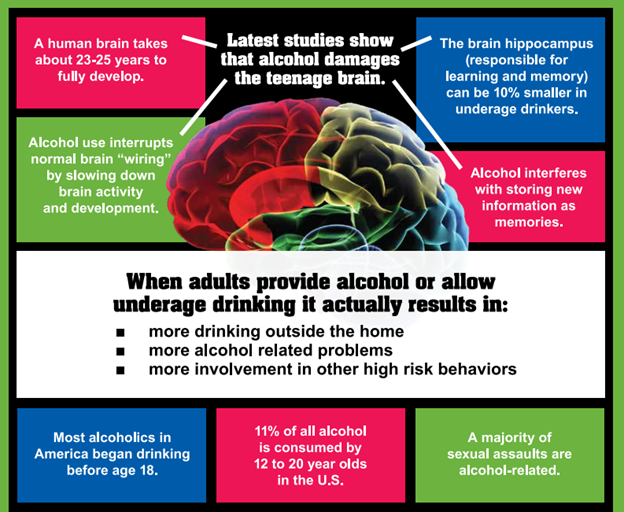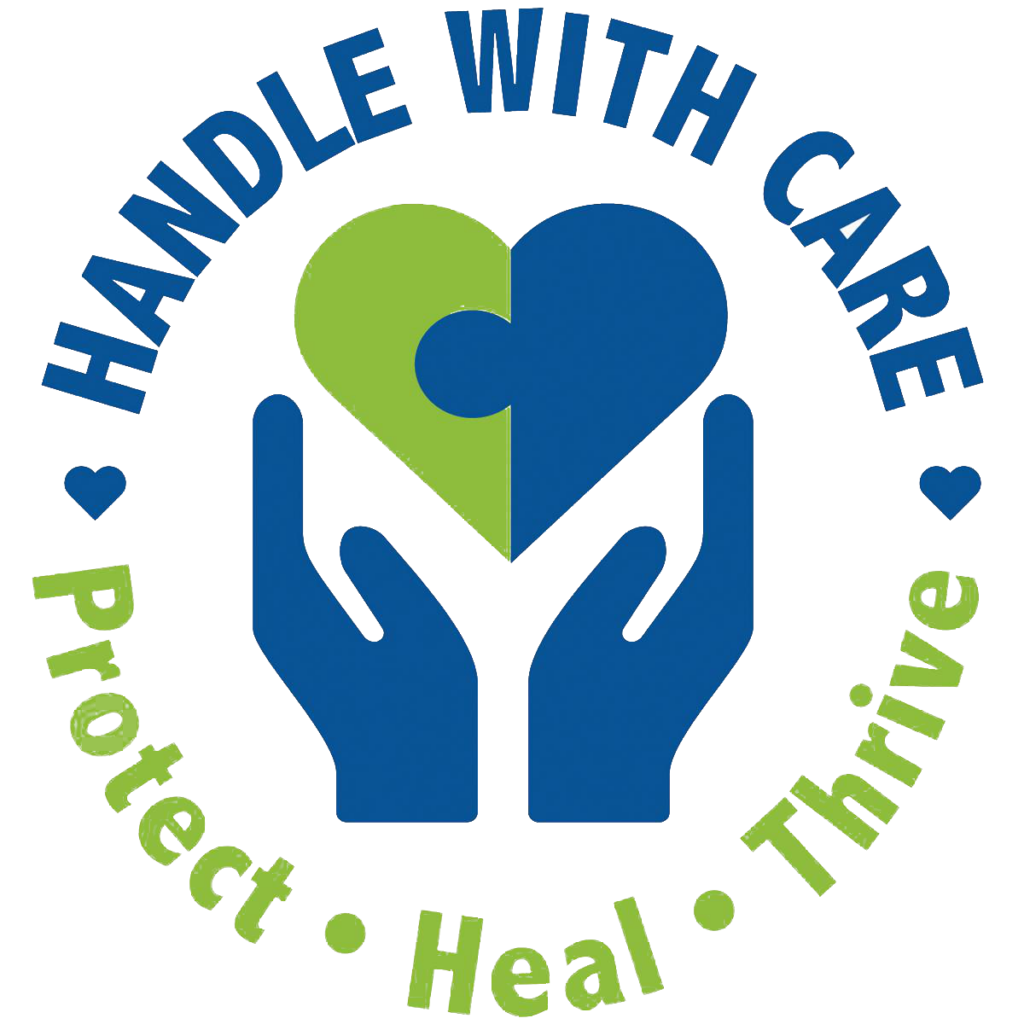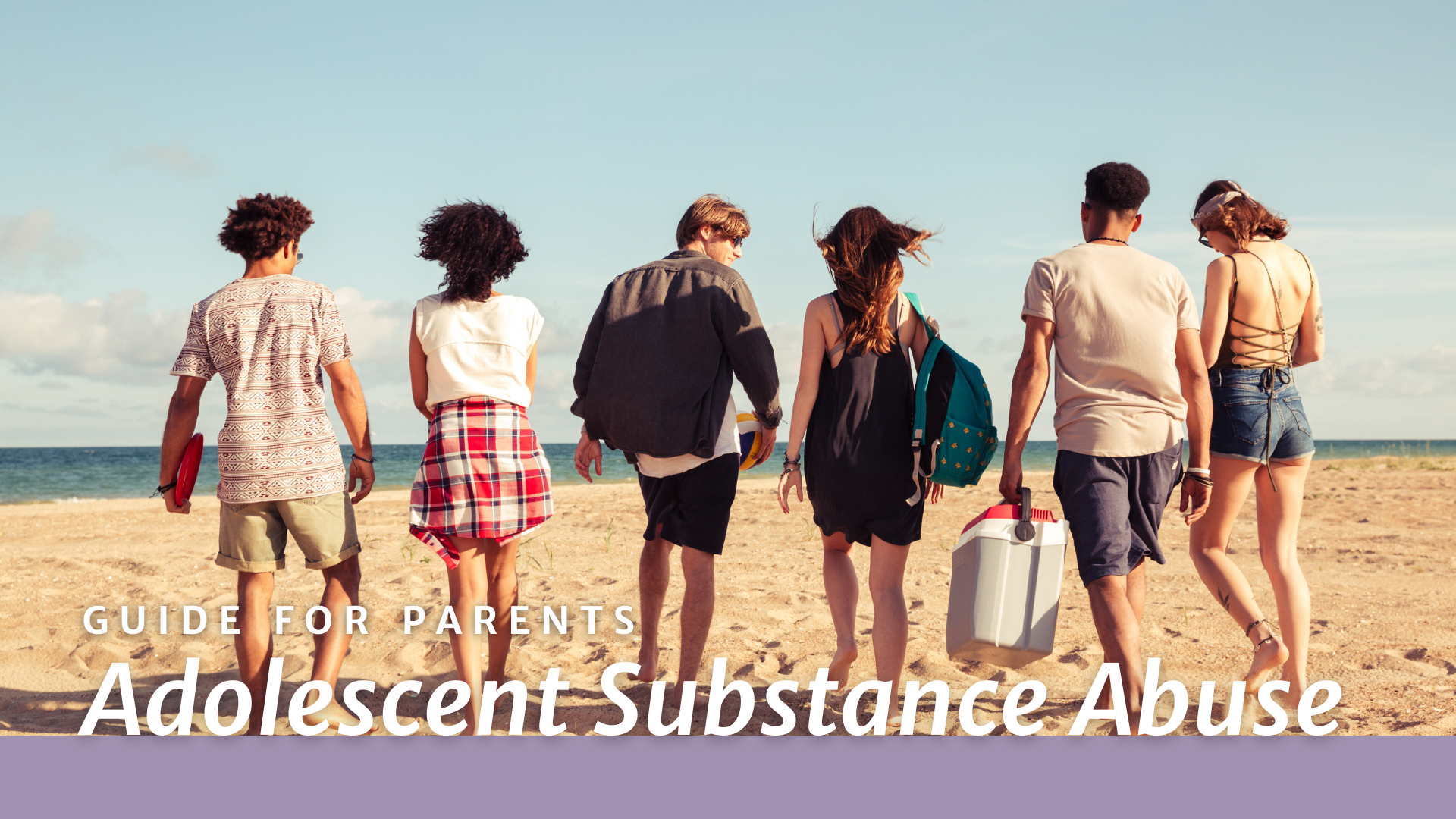Binge drinking in today’s society is becoming more prevalent now than ever before. Youth are becoming dependent on alcohol by trying to use it as a coping mechanism. Alcohol misuse in these ways can quickly turn into a dependency; and at such young ages many negative effects can arise from this.
According to the “Dietary Guidelines for Americans 2020-2025,” U.S. Department of Health and Human Services and U.S. Department of Agriculture, adults of legal drinking age can choose not to drink or to drink in moderation by limiting intake to 2 drinks or less in a day for men and 1 drink or less in a day for women, when alcohol is consumed. Drinking less is better for health than drinking more.
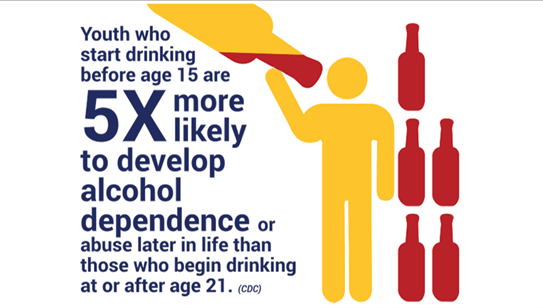
Binge Drinking:
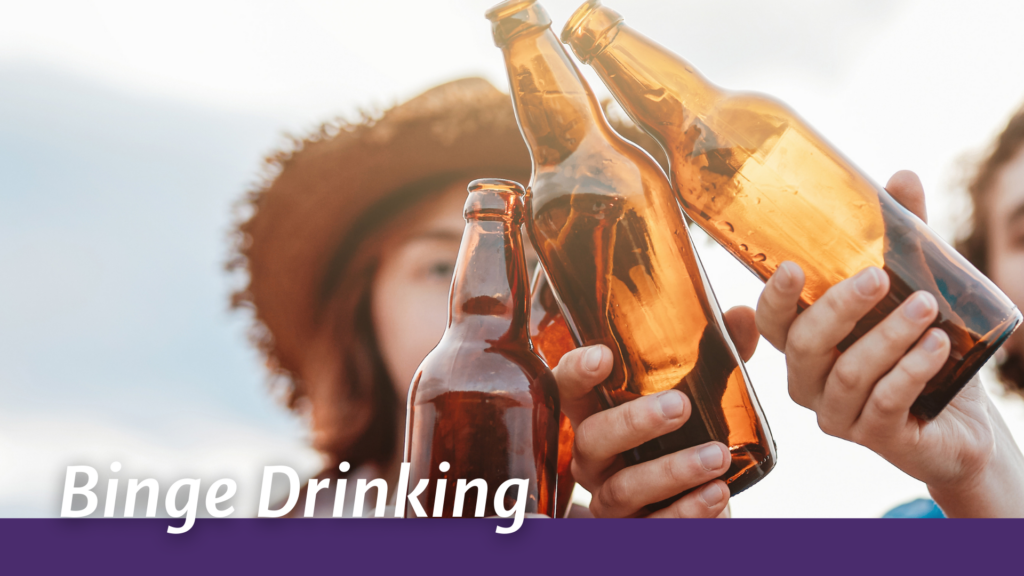
- NIAAA defines binge drinking as a pattern of drinking alcohol that brings blood alcohol concentration (BAC) to 0.08 percent – or 0.08 grams of alcohol per deciliter – or higher. For a typical adult, this pattern corresponds to consuming 5 or more drinks (male), or 4 or more drinks (female), in about 2 hours.
- The Substance Abuse and Mental Health Services Administration (SAMHSA), which conducts the annual National Survey on Drug Use and Health (NSDUH), defines binge drinking as 5 or more alcoholic drinks for males or 4 or more alcoholic drinks for females on the same occasion (i.e., at the same time or within a couple of hours of each other) on at least 1 day in the past month.
Heavy Alcohol Use:
NIAAA defines heavy drinking as follows:
- For men, consuming more than 4 drinks on any day or more than 14 drinks per week
- For women, consuming more than 3 drinks on any day or more than 7 drinks per week
- SAMHSA defines heavy alcohol use as binge drinking on 5 or more days in the past month.
Patterns of Drinking Associated with Alcohol Use Disorder:
Binge drinking and heavy alcohol use can increase an individual’s risk of alcohol use disorder.
Certain people should avoid alcohol completely, including those who:
- Plan to drive or operate machinery, or participate in activities that require skill, coordination, and alertness
- Take certain over-the-counter or prescription medications
- Have certain medical conditions
- Are recovering from alcohol use disorder or are unable to control the amount that they drink
- Are younger than age 21
- Are pregnant or may become pregnant
Affects on the Brain
The human brain is in its prime years of development until about the age of 25; so, when youth are binge drinking it is stunting their development in more ways than one. As parents and guardians, being aware of underage drinking, and stopping it, is imperative so children can reach physical and mental maturity in a safe way. For more information on how to prevent underage alcohol misuse, please visit https://teens.drugabuse.gov/drug-facts/alcohol.
